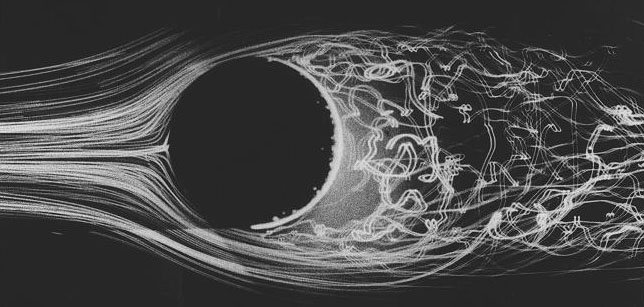
General PIV LDA Hot-wire Ultrasonic Pressure Visualizing
Fluid mechanics is complicated because it is described by non-linear relations, the flow depends on what happens in the smallest eddies in turbulence, near solid walls eddies where dissipation occurs. Fluid flow is often the carrier of both heat and concentration gradients, i.e. it is an important process in thermal and chemical processes, which often carries a mixture of solids, liquids and gases.
Even for a pure fluid mechanics process, very few general cases can be solved analytically, and for numerical simulation many assumptions and models are used. Although there has been great improvement of simulation models recent years, it is very hard to simulate many processes. Therefore CFD methods and experiments complement each others.
Below are methods described which covers a broad band of applications.
Go to Top
This method is the newest class of methods within fluid mechanics. Since approximately 10 years it has been practically possible to use digital cameras to catch the 2D flow field in a plane. The method is done so that small tracer particles are evenly distributed in the fluid and by double image photographing and image analysis, the particle movement between the images is traced. Knowing the movement and time between images gives a vector field of typically 50 x50 vectors. This can be expanded and applied in many ways:

The method can also be combined with laser induced fluorescence, LIF, to present also concentration fields of different species, temperature fields etc. Below are images of a mixing process, instantaneous image, time average, and RMS plot.

Other methods can be used together with PIV and LIF, for example to measure size of spray drops or gas bubbles in liquid, soot concentration in combustion processes etc.
Read more at DantecDynamics.com
Go to Top
Laser Doppler Anemometry is a method to remotely measure fluid velocity with crossing laser beams. In the intersection of the beams, a little measurement volume is formed in which light from two beams interfere and produces bright and dark layers. When small tracer particles cross the probe volume they cause a light fluctuation which is registered by receiving optics, processed and translated to velocity. The method can be 1D, 2D and 3D by different laser wavelengths and color separators. It is very accurate, contactless, requires no calibration, and can be done also in water channels through glass windows etc.
An extention to LDA is PDA where also the drop size in sprays, gas bubble size in liquids etc. can be measured. This is done by a combination of light receivers in different positions that gives accurate information of both drop size and velocity distribution.


Read more at DantecDynamics.com
Go to Top
In hot-wire anemometry, the fluid velocity is measured thermally. A thin wire, a few micrometers, and a millimetre long, is heated, and the fluid flow passing the wire is heated by the wire. The fast-responce control system keeps the wire at given temperature and the voltage to do this represent the flow velocity. This method is very accurate and fast, and has been the major tool in turbulence research.

Read more at DantecDynamics.com
Go to Top
Ultrasonic Velocity Profiling is a method for determining the fluid velocity distribution in liquids. It is a non-intrusive method which can even be used through solid walls, if only the acoustic coupling is maintained. The probe sends out a pulse train of ultrasonic waves, and the doppler shift of the reflected signal from particles in the fluid gives the flow velocity along the full depth of the flow channel at once. Many probes can be used together to map the 2D velocity field.
The method can be used for non-transparent fluids like mineral oil, pulp fiber solutions, foodstuffs like mayonnaise and chokolate.

Read more at Met-flow.com
Go to Top
By measuring the pressure distribution on the tip of a little multihole probe, the velocity can be determined with both accurate velocity magnitude and direction. This is a good method for flow mapping in wind tunnels but also in free flow. Probes typically give good accuracy when flow direction is mainly within a cone of 50 degrees, but omni-probes can resolve flow velocity almost from all directions, which is very useful in separated flow in back-flow regions.
The frequency response is typically up to a few hundred Hertz, but with special high-speed probes a few kiloHertz is possible. The probes work well in both air and water.

Read more at Aeroprobe.com
Go to Top
Visualization can be done with many methods depending on the applications in fluid flows: gas flow, water flow, multiphase flow, it may also be multiphase flow where the phases are liquids... For many applications there are special treatments required to solve the task, then VIDIX is willing to help find a good solution.
For the special case where air movement shall be visualized, a special soap bubble generator can be used, which produces soap bubbles of around 1 mm diameter which could follow air through ventilation systems without being destroyd. It is important that the soap bubbles have same density the surrounding air, otherwise they will not follow the flow correctly. Therefore the soap bubbles are filled with helium to give a lift force compensating for the gravity of the soap. Thereby the bubbles move correctly in slow flow fields but also in strong turbulence where the accelerations are strong.

Read more at Sageaction.com